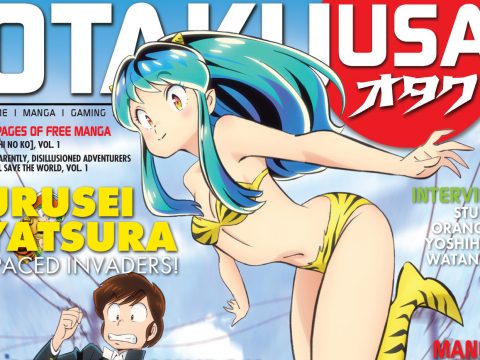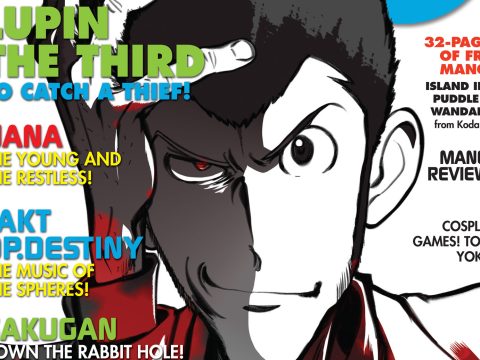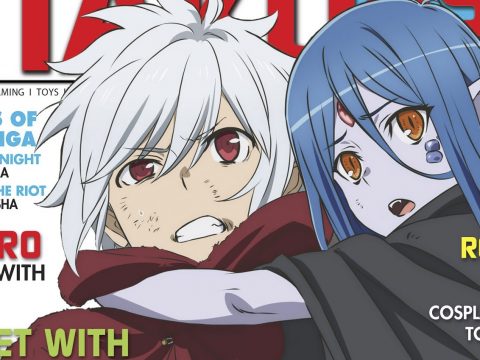When They Cry 3: Umineko no Naku Koro ni (“When the Seagulls Cry”) is not, in the strictest sense, a sequel to the events of the first two When They Cry/Higurashi game/anime series. Indeed, most of the main cast of Umineko are in no way related to the now-familiar denizens of Hinamizawa, and the narrative sequence of Umineko is easily enjoyable bereft of knowledge of Higurashi. There are connections, of course, but I leave it to the player to discover them for themselves, as, indeed, the player will have to discover a great many things for themselves, most notably what, exactly, is going on.
Umineko takes some of its initial narrative trappings almost direct from the setup of Agatha Christie’s classic novel of locked-island murder And Then There Were None. Taking place on Rokkenjima Island, the site of the Ushiromiya family estates, during the annual family conference, eighteen people—servants and family members alike—are locked on the island for two days due to a typhoon. Of course, since the Ushiromiya family is fabulously wealthy, this is no ordinary family gathering as the four adult siblings—Krauss, Eva, Rudolf, and Rosa—quickly get to bickering over who will walk away with the larger portion of their father Kinzo’s estate when he dies within six months.
The bickering quickly drives away their children—Jessica, George, Battler, and Maria respectively—who spend valuable cousin-bonding time playing on the beach and contemplating the mysterious portrait and epitaph dedicated to the Golden Witch Beatrice. Beatrice, Kinzo’s alleged former lover and the “witch” who gave him the gold ingots necessary for Kinzo to rebuild the Ushiromiya family fortunes. Family legend has it that whoever solves the riddle encoded in the epitaph will obtain Kinzo’s inheritance, rumored to be ten tons of gold that Beatrice gifted Kinzo with. Everyone scoffs at the existence of witches…
…until inexplicable murders begin to happen, each following the pattern of the ten “twilights” of the epitaph, with letters strewn about claiming that the murderer is none other than Beatrice, witch of legend. One by one, all the residents of the island are killed, until none are left, and then the infamous Ryukishi07 Groundhog Day effect kicks in and Umineko starts in earnest. For now it’s a battle between Battler (the most obstinate of Kinzo’s grandchildren) and Beatrice herself over whether witches really do exist—or whether some other unknown, human entity—or, worse, a member of the family—is responsible for the murders.
If all that sounds confusing in summary, it’s even more confusing in Umineko, the worst kind of murder mystery where “whodunit” is of almost tertiary concern. “What’s going on?” is likely to be a question that many a player will be asking themselves as their conceptions and theories of Umineko are constantly upended by Umineko itself. If Higurashi stalled and went for the sucker-punch, Umineko goes for the right straight to the face the second the bell rings.
For those unfamiliar with Ryukishi07’s typical narrative structure, Umineko is told through a sequence of eight arcs that cover, roughly, the same sequence of events, divided into two parts: four “question” arcs, and four “answer” arcs. Although the sequence of events and period of time covered remains roughly the same, what actually occurs in each of the episodes/arcs is different. The repeating narrative gives Umineko a chance to explore different aspects of characters at different times and in different ways. And characterization is one of the strongest points of Umineko.
In fact, playing Umineko is likely to be gut-wrenching less because of the violence level (which typically involves a great deal of torn, disfigured faces and other macabre murder methods straight out of a Grand Guignol production) and more because of the sheer antipathy each of the characters feel for one another at times. Physical and emotional child abuse, bullying, paranoid mistrust—these are only some of the topics touched upon in Umineko’s explorations of the darker side of humanity. Complex emotions and characters are commonplace; I frequently found myself sympathizing strongly with various characters while simultaneously despising their actions, past or present. This is certainly not a series for the faint-of-heart.
On top of all this (as if being deliberately confusing, heartbreaking, and graphically violent wasn’t enough) Umineko addresses serious philosophical questions about the nature of truth, of happiness, of the twin promises and pitfalls of both fantasy and reality, Indeed, the very premise of the game structures itself on a decision between rejecting fantasy or rejecting reality, with no end in sight for the endless repetition of purgatory until one or the other is completely rejected. But it’s never heavyhanded nor didactic: as any serious thematic weight should be, it’s largely implicit, and the questions weave themselves easily into the expansive web of mystery.
With the lofty ambitions to which Umineko aspires (by accident or by design), it might be easy to imagine Ryukishi07 becoming overwhelmed by the sheer authorial weight of it all. But I find it hard to find or think of a work of literature—actual, published prose—that strikes such a balance between the heightened levels of both visceral and intellectual entertainment that Umineko does. The prose might not be the most eloquent and articulate prose out there, but neither is Ryukishi07’s art and when the story is this good, I’m perfectly willing to forgive any grievous formal errors.
Of particular note beyond the actual narrative is the soundtrack: Umineko belongs, like Higurashi, to a very small genre of visual novels called sound novels, where the soundtrack is as strong a focus as the story. Sound effects and music are often used to give a “cinematic” feel to the scene at hand. The background music is provided by a host of doujin music composers and artists in a wide variety of styles: from Akiko Shikata’s opening theme, which blends global ethnic music and classical traditions, to dai’s more straightforward piano-and-string compositions, to zts’s hard-trance/electronic pieces. The soundtrack is extensive and, for the first four episodes alone, comprises five CDs and over six hours of music.
Umineko no Naku Koro ni has yet to be officially licensed, but Ryukishi07 has given his blessing to the fan-translating efforts of The Witch Hunt (https://www.witch-hunt.com/), and the game is offered for sale at import shops, so you can play the game in English, legitimately. A highly recommended activity, too—Umineko is perhaps one of the best novels I’ve read in a long time, and well worth the temporal, emotional, intellectual, and financial investments. It’s also a good time now: the first four “question” arcs have been released already, the anime adaptation (from the same staff of Higurashi/When They Cry) is currently running, and as of Comiket 76 the first episode of the “answer” arcs have been released.







